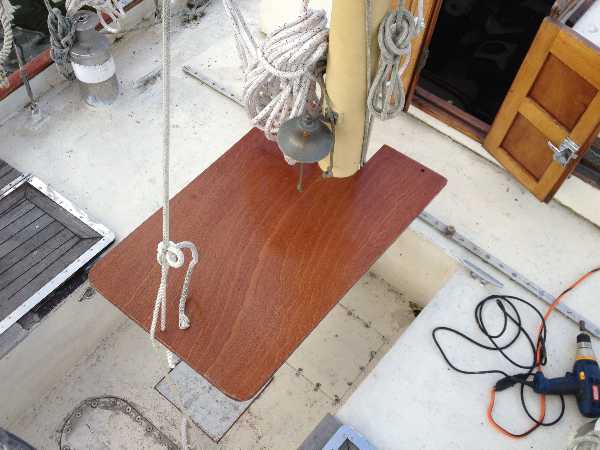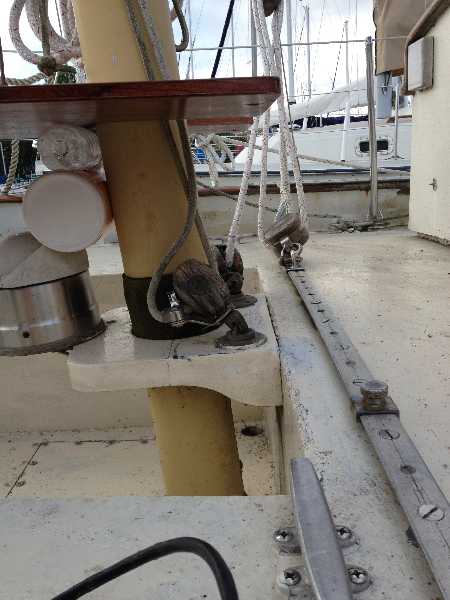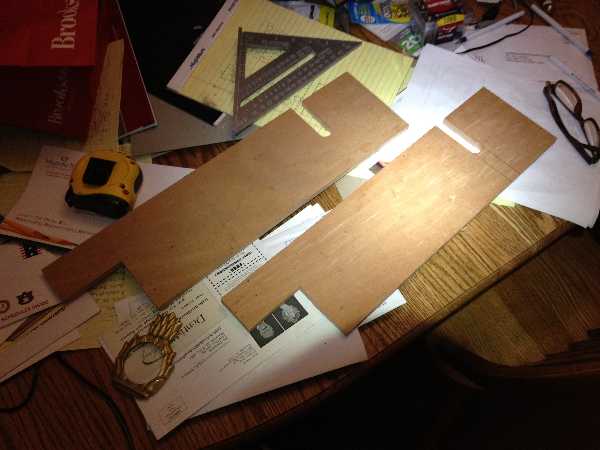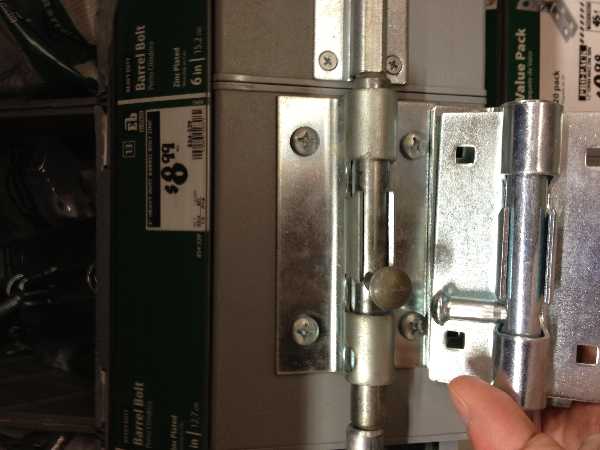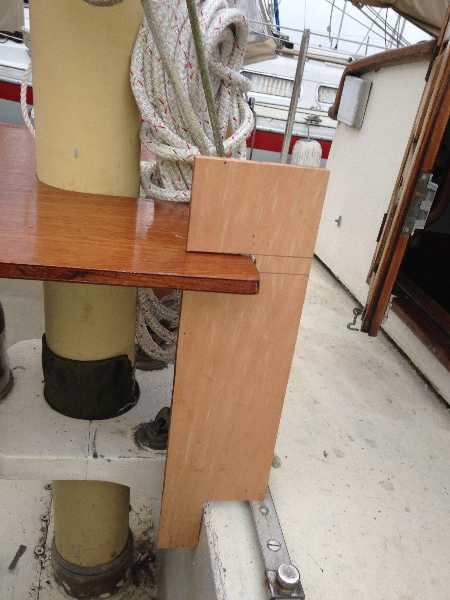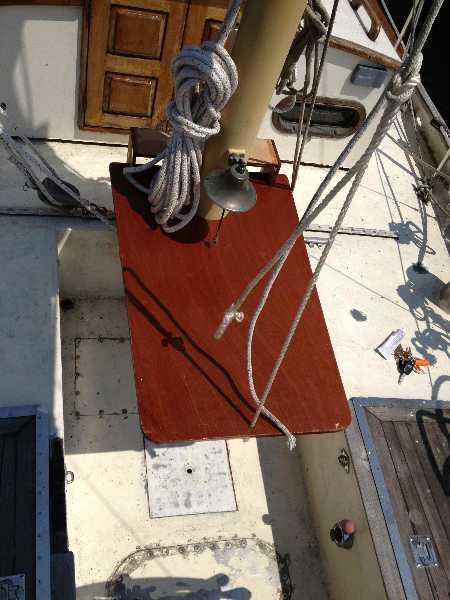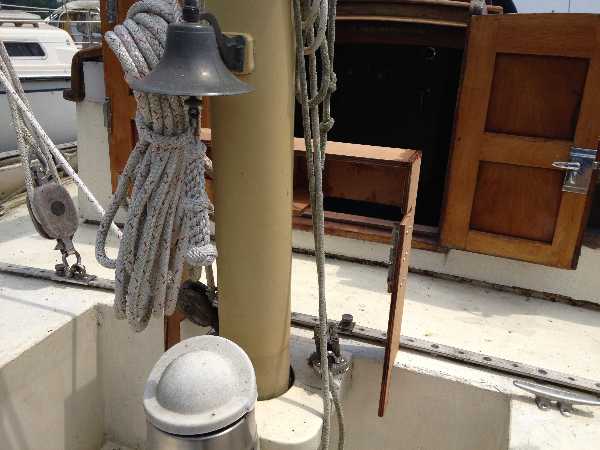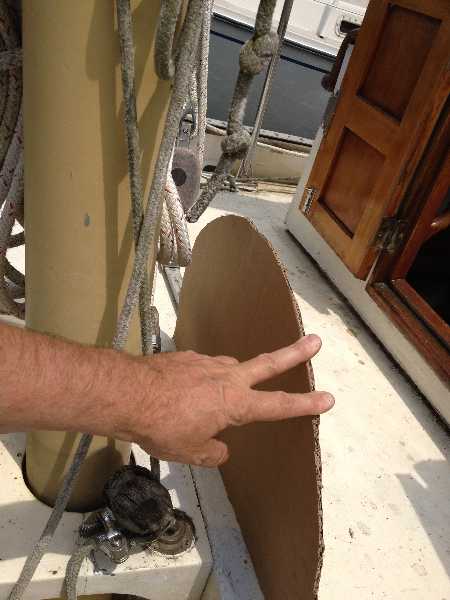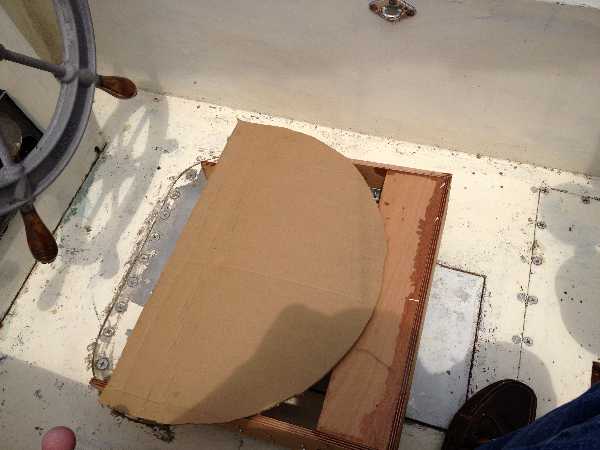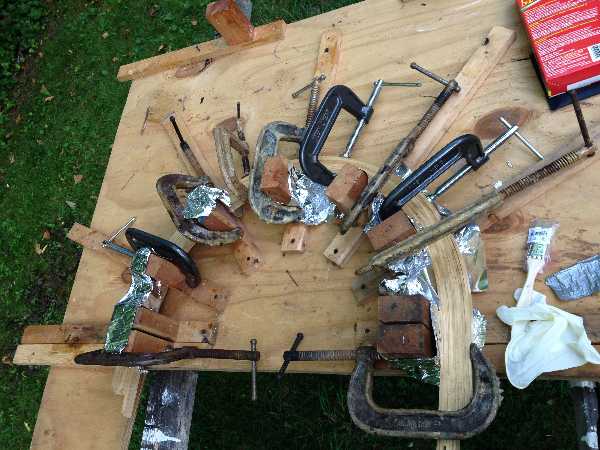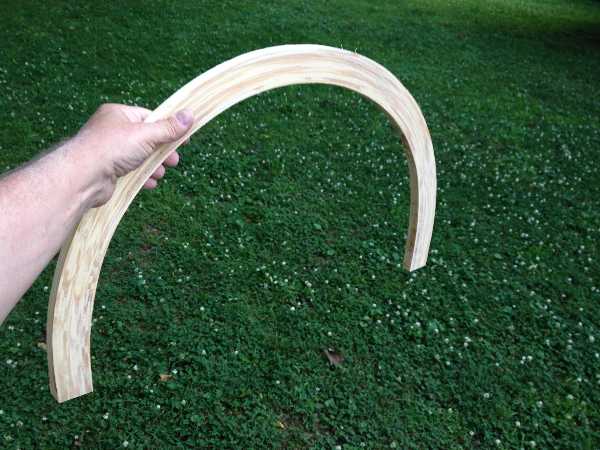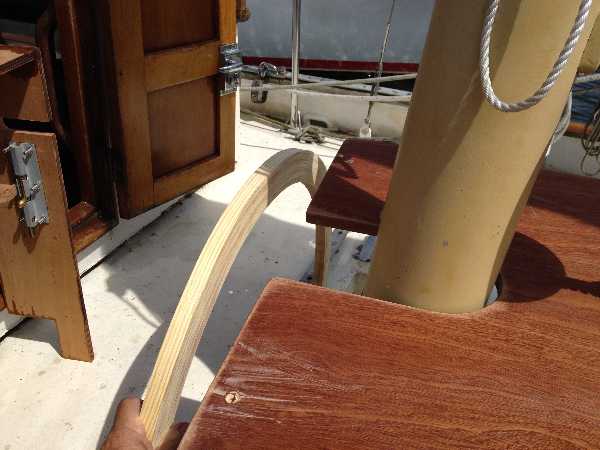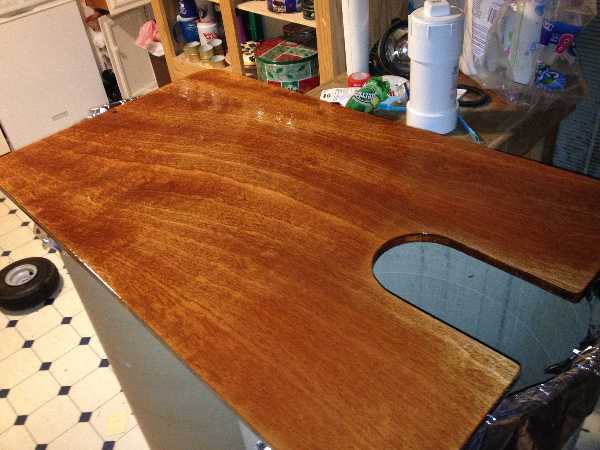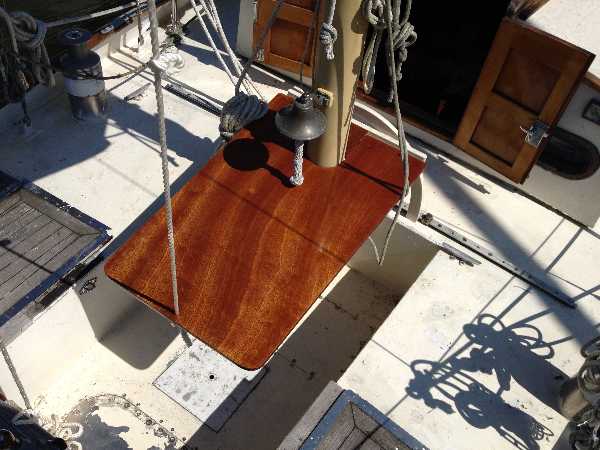In 2012 I was on a raft-up with other cruisers. During dinner I noticed that other boats had cockpit tables. I got to thinking how nice it would be for us to have one. As usual I wanted to come up with the best possible design that I could. I thought about it for a while and finally came up with a good design that will work and be useful. In mid 2013 I started construction.
I took a pattern in cardboard and mocked up the table to see how big I wanted it to be. I then mocked it up in cheap thin plywood to refine the size and shape. I also considered how it would be mounted and supported. It had to be big enough for two people or four in a pinch. Next it had to be stiff and strong but light and easy to carry. Also it had to be supported such that people to easily get up and out from sitting at it.
The following pictures show the construction of the basic table.
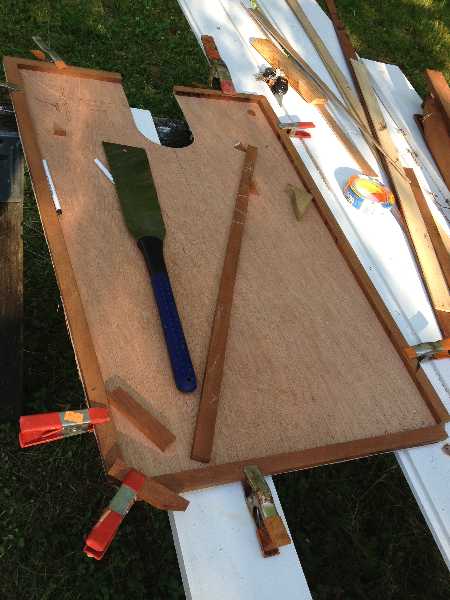
I started with a sheet of sapele and added a border of mahogany.
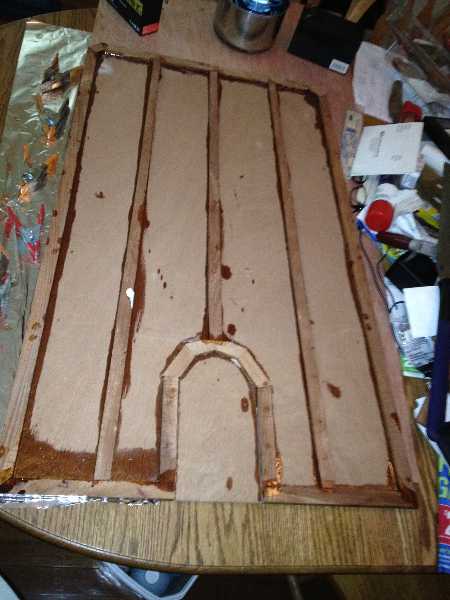
I added interior framework to stiffen it.
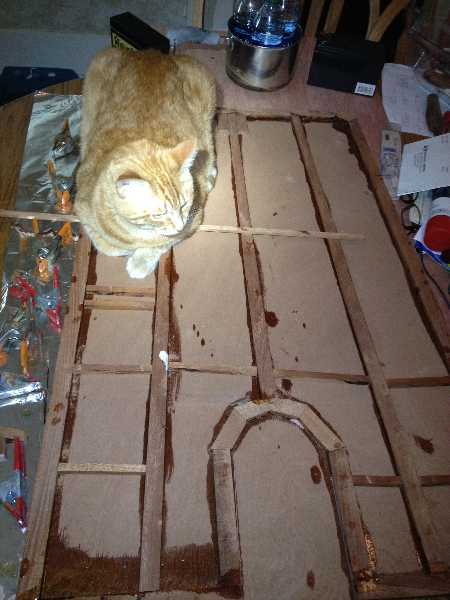
Neptune inspects the installed logitudinal framework pieces.
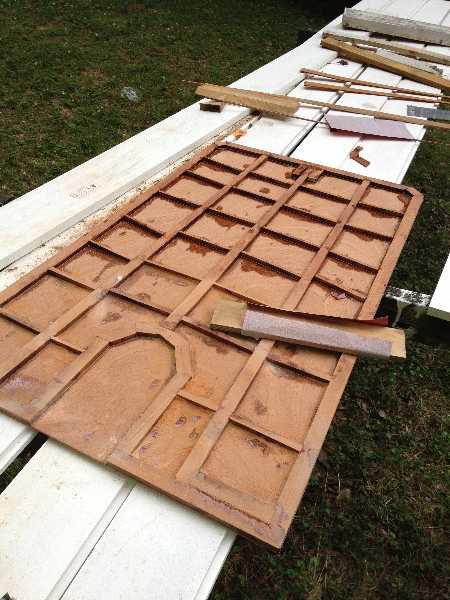
All cross pieces are installed. I use a sanding block to remove the glue burrs and make it flat.
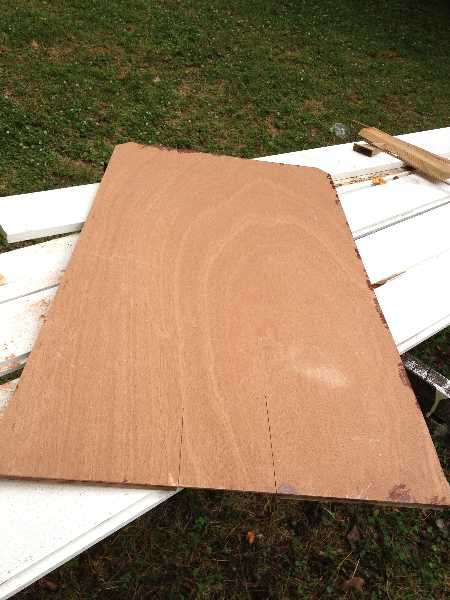
The second side glued on. I used books and other weights to apply pressure over the whole area of the table to insure a good glue joint thoughout. Here I marked off the cutout for the mizzen mast.
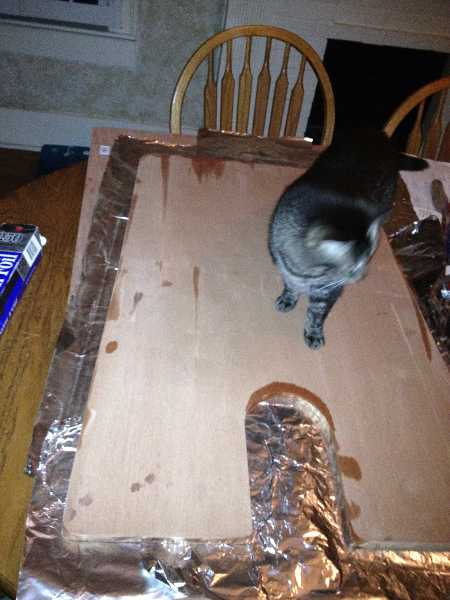
I cut the slot for the mizzen mast and used epoxy to seal the edges. Tansy inspects it.
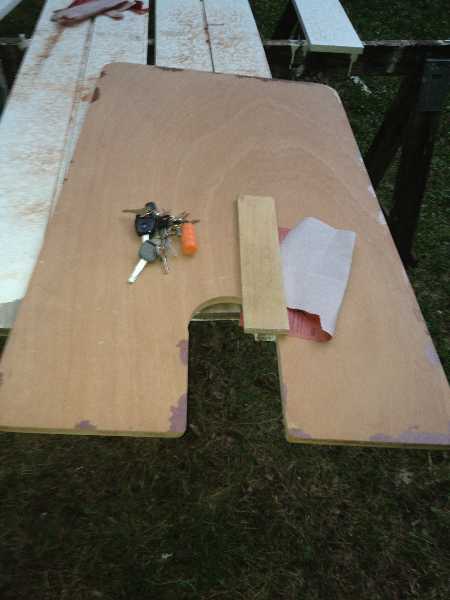
The table gets a good sanding.
